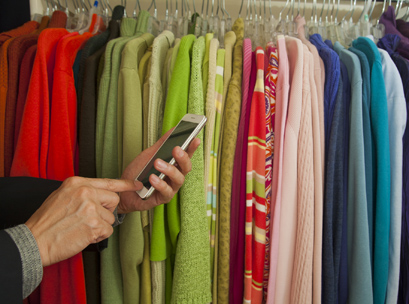Before a mall (or a retailer for that matter) decides whether they install free wi-fi for the public, there are a few factors to consider and it is not right for everyone. Customers want it because it will help them save time, be flexible, increase productivity and stay connected with their world, but, there are risks and other factors to consider. Know it is a double-edged sword There is a risk that customers will shop around other retailers without moving – comparing prices with competit
ors online.
Also, people expect connectivity and connectivity can increase satisfaction. If it is not fast enough for instance, it can be a cause of ongoing complaints.
By offering free wi-fi, you also take on an indirect responsibility for the security of the data, whatever the fine print says.
All of these risks can be mitigated by choosing a reliable supplier. Most of us have probably installed our own Wi-Fi at home, so it does not seem to be a reason to get third parties involved, but that would be a major error, considering the risks and the benefits.
There are a few providers in Australia, Skyfii being one of the largest who has experience in malls in particular plus the likes of Aruba. Choosing a reputable operator allows you to access (and potentially benchmark) insights. Every year, according to Skyfii they can analyse 300 million visitor experiences using existing wi-fi infrastructure, BLE beacon networks, door-to-people counters, video sources, web and social platforms, and bring all of that together in one application.
Don’t do it because it is cheap
And don’t choose your partner solely on price. Cost is negligible for a regional mall. But you don’t do it because it is cheap, you do it because it will make you better. The reliability of the service, the detail of the coverage, and most importantly the depth of the analysis are far more important than cost of initial set-up.
Invest in infrastructure ONLY if you will invest in using the data
The key is offering wi-fi can allow you to gather data. (Hence choosing the right partner.)
Wi-fi is not installed simply to provide a free service for customers. Wi-fi for customers supplements the traditional loyalty card. People think loyalty cards are a mechanism for points, but actually it’s a mechanism for gathering data about the customer. Wi-fi does that, but is also able to add contextual information such as how people move through the store or the mall.
With a good provider and with a sound strategy, mall owners and large retailers will be able to change the way they do marketing:
Data capture: Capture customer information through a guest wi-fi registration page.
Configurable templates: Customise registration pages and other customer forms.
Progressive profiling: Schedule subsequent questions with each login at the captive portal to capture additional data.
Content delivery: Deliver content like welcome emails, SMS, Video and customer landing pages.
Multi-venue configuration: Configure guest wi-fi based on a single venue or multiple venues.
Social login: Provide users social login options including Facebook, Instagram & Twitter.
Foot traffic: Measure unique visitor counts and identify your peak visitor times
Smart Zones: Use geo-fencing technology to define areas of interest for analysis
Visitor flow: Visualise the most travelled paths and popular destinations in your venue
Wi-fi Activity: Measure sessions and analyse which sites customers visit using Wi-fi
Conversion: Analyse the conversion funnel for your venue, from passerby to till
Heat-mapping: View visitor movement in real-time on your venue map
Dwell Time: Understand how customers spend their time and engage with your venue
Attribution: Segment visitor activity and traffic to analyse the impact of marketing campaigns. I.e. being able to ‘attribute’ your traffic to the right source.
Like so many things, there is a temptation to adopt new technologies because they are new technologies. That is not smart. But wi-fi (and Bluetooth and NFC) technologies are increasingly being integrated into our lives, and I can only see reasons to install wi-fi becoming increasingly important.
It may seem futuristic right now, but for instance, consider this:
Most cellular networks are now adopting Wi-fi-enabled calling, and this way you can guarantee consumers don’t have to suffer poor mobile reception in your centre.
When people start paying with cryptocurrencies, they need network access to their digital wallet.
How will the Internet of Things play out?
Could it impact how children are monitored (and not lost) in the mall?
No one knows for sure how everything will play out, but what we do know is that there is data in your future. The key takeaways therefore are:
First, have a strategy, second, pick a good provider and thirdly, keep iterating and keep learning. Fail forward.
Dennis Price: Co-Founder at ganador.com.au and yearone.solutions – can be reached on 0411030436.

